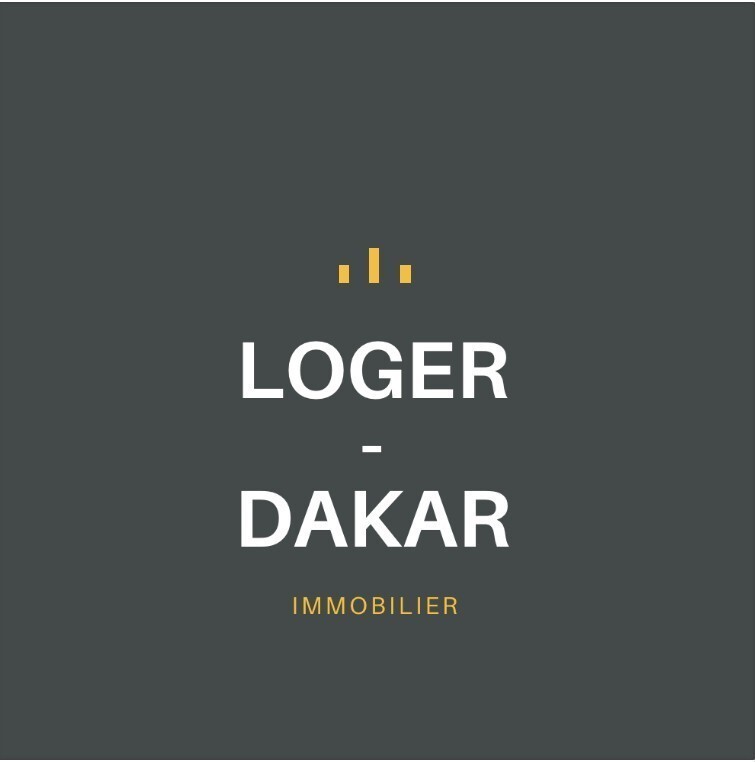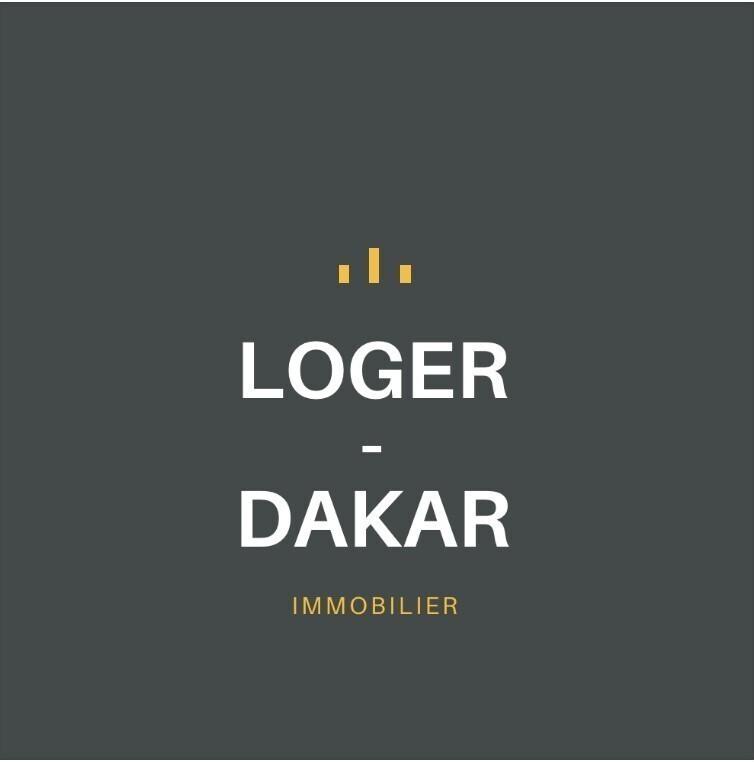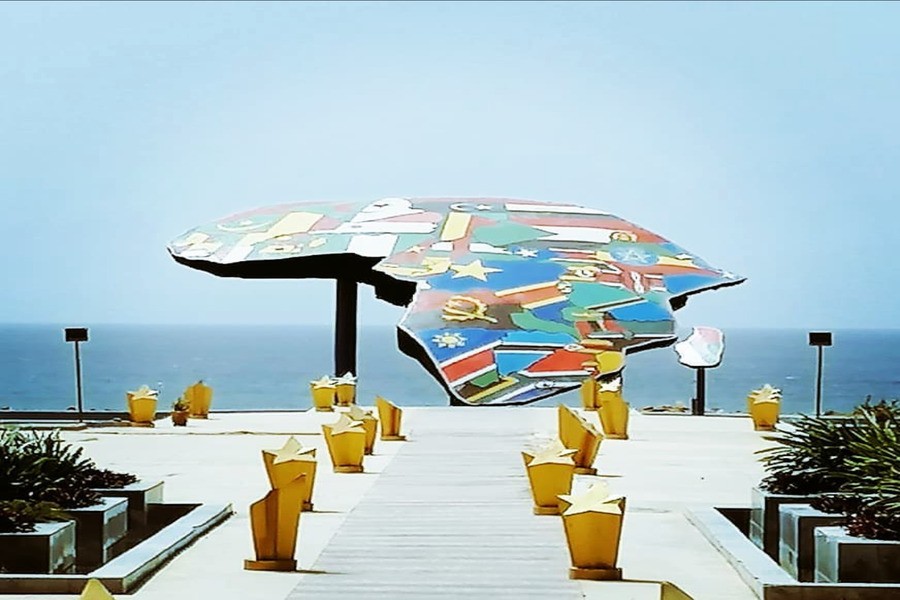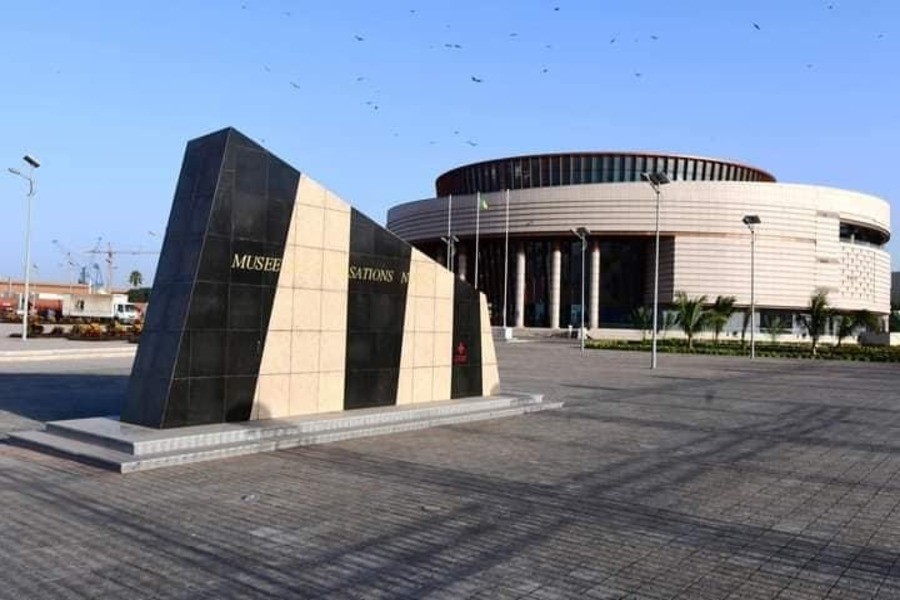Located at the western tip of the African continent, the capital of the Senegalis a vibrant metropolis. With its 3.8 million inhabitants, this coastal city is the economic, cultural and political heart of the country. Dakar is distinguished by its unique blend of modernity and tradition, offering a dynamic living environment between the Atlantic Ocean and the Sahel.
The town is famous for :
- Its exceptional geographical location on the Cape Verde peninsula
- Its pleasant climate, tempered by sea breezes
- Cultural diversity, reflecting Senegal's rich history
- Its rapid economic development, making it a regional hub
Contents:
Choosing the right neighborhood Dakar is crucial for several reasons:
- Quality of life: Each neighborhood has its own atmosphere, infrastructure and amenities.
- Proximity to work or schools : Traffic in Dakar can be heavy, so it's important to choose the right place to live.
- Safety : Safety levels vary from neighborhood to neighborhood.
- Budget Real estate prices vary considerably from one neighborhood to another.
- Lifestyle: Some neighborhoods are better suited to family life, others to young professionals or expatriates.
To determine the "best" neighborhoods, we took several factors into account:
- Safety : Crime rate and presence of security services
- Infrastructure : Road quality, water supply and electricity
- Amenities : Close to schools, hospitals, shops and leisure facilities
- Accessibility : Easy to get around and connected to public transport
- Environment : Green spaces, noise and air pollution
- Development : Urban planning projects and neighborhood development potential
- Cost of living: Prices of real estate and everyday consumer goods
- Atmosphere: Neighborhood life, cultural and social diversity
Dakar's main districts include :
- Plateau (Downtown)
- Medina
- fann
- Point
- Almadies
- Ngor
- Yoff
- Ouakam
- Mermoz-Sacré-C?ur
- Freedom
- Grand Dakar
- pikin
- Guédiawaye
Dakar's urban development reflects Senegal's rich and varied history:
Pre-colonial origins:
Before colonization, the area was inhabited by the Lebous, mainly around what is today Yoff and Ouakam.
Colonial period (1857-1960) :
- 1857: Foundation of Dakar by the French
- Development of the Plateau as an administrative and commercial center
- Creation of segregated neighbourhoods such as Medina
Post-independence (after 1960) :
? Rapid eastward expansion of the city
(pikin, Guédiawaye)
? Development of new residential areas (fann, Point)
1980-2000 :
- Accelerated urbanization and the emergence of informal settlements
- Development of Almadies and the north coast
21st century:
- Urban renewal projects (toll freeway, new airport)
- Development of Diamniadio as a new town
- Gentrification of certain central districts
This historical evolution explains the diversity of Dakar's neighborhoods, each with its own unique identity and characteristics. In the following sections, we'll explore the specifics of each neighborhood in detail to help you find the one that best suits your needs and lifestyle.
Dakar's upscale residential districts
Dakar offers a diversity of upscale residential neighborhoods, each with its own unique charm. Among the most sought-after are Almadies and Fann, two areas that attract a wealthy clientele in search of an exceptional living environment.
Les Almadies:
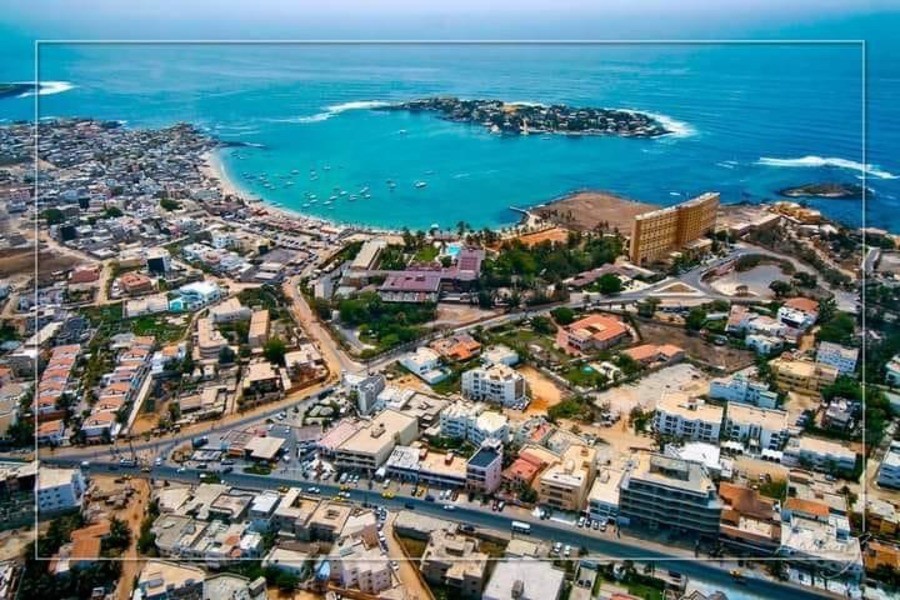
A coastal paradise for expatriates and Dakar?s elite
Located in the extreme west of Dakar, the Almadies district has become one of the most sought-after in the Senegalese capital. This coastal neighborhood has an international ambience and a luxurious lifestyle.
Les Almadies is distinguished by its modern architecture, with numerous villas and luxury residences lining the coastline. The district is a particular magnet for expatriates and wealthy Dakar residents, creating a dynamic cosmopolitan community.
One of the main assets of Les Almadies is its proximity to the beaches. Residents enjoy easy access to Plage des Almadies and Plage de Ngor, offering magnificent sunsets and water sports opportunities.
This privileged seaside location contributes greatly to the neighborhood's quality of life.
Life in Les Almadies is synonymous with comfort and upscale amenities. The neighborhood abounds with international restaurants, trendy bars and luxury boutiques, satisfying the most discerning palates and shopping enthusiasts. The presence of several embassies and international organizations reinforces the neighborhood's cosmopolitan character.
For familiess, Les Almadies offers the advantage of proximity to renowned international schools, ensuring a quality education in a multicultural environment. However, this quality of life comes at a cost: Almadies is known for having one of the highest living costs in Dakar, with rents among the most expensive in the city.
Despite its many advantages, the Almadies district does have a few drawbacks. Traffic can be heavy at rush hour, making it difficult to get around.
Some long-time residents also regret a certain loss of Senegalese authenticity, as the neighborhood has evolved to meet the expectations of an international clientele.
Fann:

Combining historic prestige with verdant tranquillity
The Fann district, located in the heart of Dakar, offers a prestigious living environment distinguished by its calm and lush greenery. This upscale residential district, which includes areas such as Fann-résidence and Fann-Hock, attracts a wealthy population in search of tranquility while remaining close to the city center. Fann is renowned for its serene atmosphere and verdant surroundings, offering an oasis of calm amidst the hustle and bustle of Dakar. Wide tree-lined avenues and well-kept gardens create a soothing atmosphere, much appreciated by residents.
One of Fann's major assets is its proximity to the city center and business districts, enabling residents to enjoy a peaceful residential setting while remaining connected to the economic life of the capital. This central location makes it a preferred choice for high-level professionals and affluent families.
The Fann district is also distinguished by its varied architecture, with a harmonious blend of characterful colonial villas and elegant modern buildings. This architectural diversity is particularly evident in sub-neighborhoods such as Fann-résidenceknown for its sumptuous residences, and Fann-HockThe district offers an interesting mix of architectural styles. This richness contributes to the district's unique charm and bears witness to its rich historical heritage.
The presence of Cheikh Anta Diop University and several research institutes gives Fann an important intellectual and cultural dimension. This proximity to the academic world attracts many academics, researchers and intellectuals, creating a cultivated and committed residential community, particularly in the Fann-résidence area.
Although Fann is mainly residential, it offers easy access to essential amenities.
However, compared with other more lively neighborhoods, Fann has fewer local shops, which can be seen as a disadvantage for some residents. This is particularly noticeable in more exclusive areas like Fann-résidence.
The profile of Fann's residents is varied but generally upmarket. They include intellectuals, academics, long-established Senegalese families, diplomats and senior civil servants. This diversity, which is expressed differently between Fann-résidence and Fann-Hock, contributes to the cultural and social richness of the neighborhood.
As with Les Almadies, Fann's main drawback is the high cost of real estate. Property prices in this prestigious district, particularly in the Fann-résidence area, are among the highest in Dakar, reflecting the exceptional quality of life it offers.
Ngor:
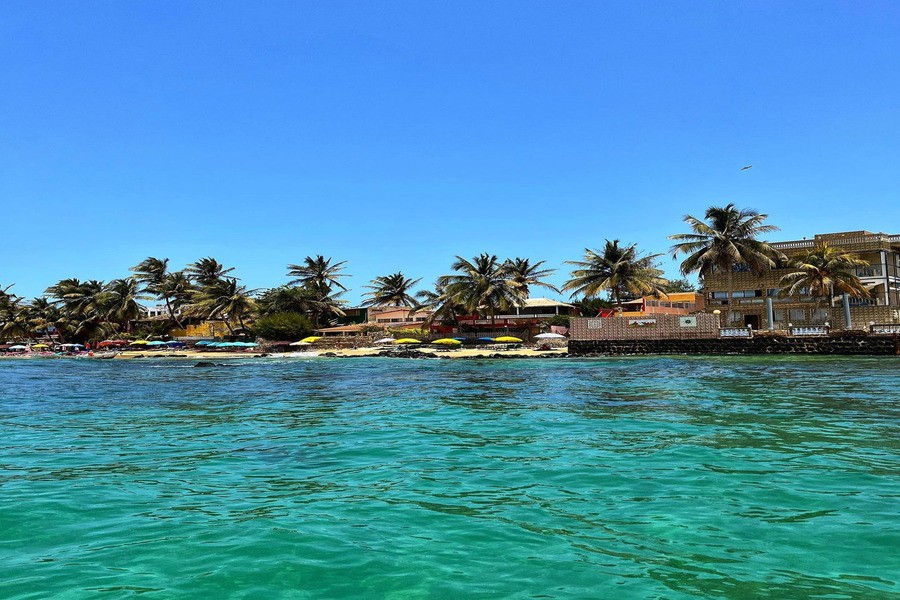
The perfect blend of tradition and modernity
Nestled on Dakar?s northern coast, Ngor offers a unique experience, combining the charm of a traditional Lebou village with the appeal of a modern residential neighborhood. This captivating neighborhood seduces with its authenticity and relaxed atmosphere, while offering a privileged living environment.
One of Ngor?s main assets is its magnificent beaches. Renowned for their natural beauty, they attract not only local residents but surf enthusiasts from all over the world. Ngor?s surf spots are among the most popular on the West African coast, adding a sporting and international dimension to the area.
In terms of real estate, Ngor offers an interesting mix of renovated traditional houses and luxurious new constructions. The development of high-end oceanfront residences is attracting more and more investors and wealthy residents, while preserving the authentic soul of the neighborhood.
Food lovers will find plenty to enjoy in Ngor, with its many seafood restaurants and beach bars. Proximity to Blaise Diagne international airport is another practical advantage for residents who travel frequently.
Ngor represents an attractive opportunity for those seeking a more authentic lifestyle than neighboring Almadies, while still benefiting from easy access to modern amenities. It's a neighborhood that particularly appeals to expatriates, water sports enthusiasts and families seeking a relaxed coastal lifestyle.
Dakar's family districts
Dakar offers a diversity of upscale residential neighborhoods, each with its own unique charm. Among the most sought-after are Almadies and Fann, two areas that attract a wealthy clientele in search of an exceptional living environment.
Mermoz-Sacré-C?ur :
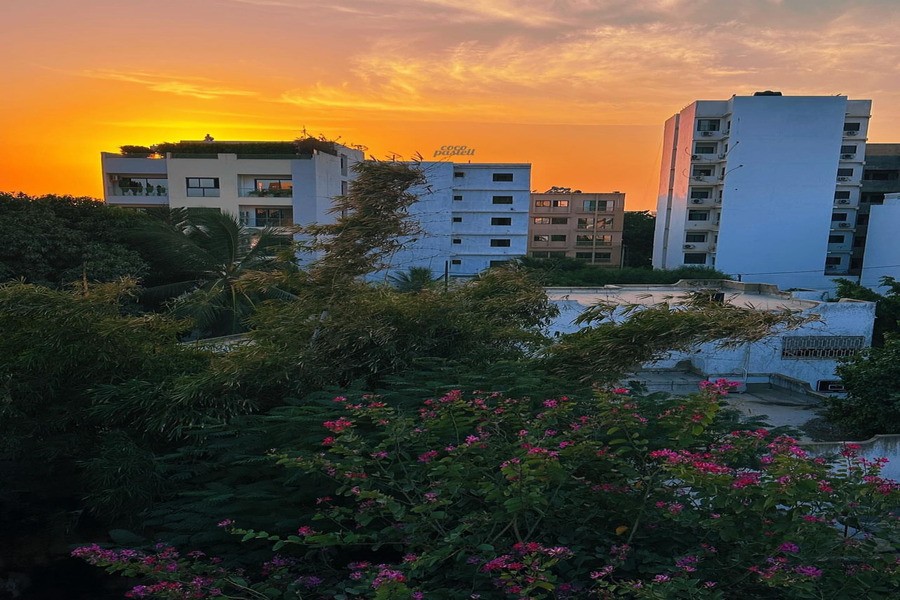
The ideal choice for families
Mermoz-Sacré-C?ur has become one of Dakar's most popular family neighborhoods.
This residential neighborhood offers a calm, well-kept environment, ideal for families.
One of the main assets of Mermoz-Sacré-C?ur is the quality of its educational infrastructure. The neighborhood is home to many renowned private and public schools, attracting families concerned about their children's education. The presence of well-equipped clinics and medical centers reinforces residents' sense of security and comfort.
Mermoz-Sacré-C?ur has plenty to offer in terms of green spaces and leisure activities. The neighborhood boasts parks and public gardens where families can relax and children can play in complete safety.
The nearby Corniche Ouest also offers great opportunities for walks and outdoor activities.
In terms of accommodation, Mermoz-Sacré-C?ur offers a variety of family-friendly options. There are spacious detached villas, modern apartments in secure residences, as well as some charmingly renovated traditional houses.
This diversity enables families to find the home that best suits their needs and budget.
Cité Keur Gorgui
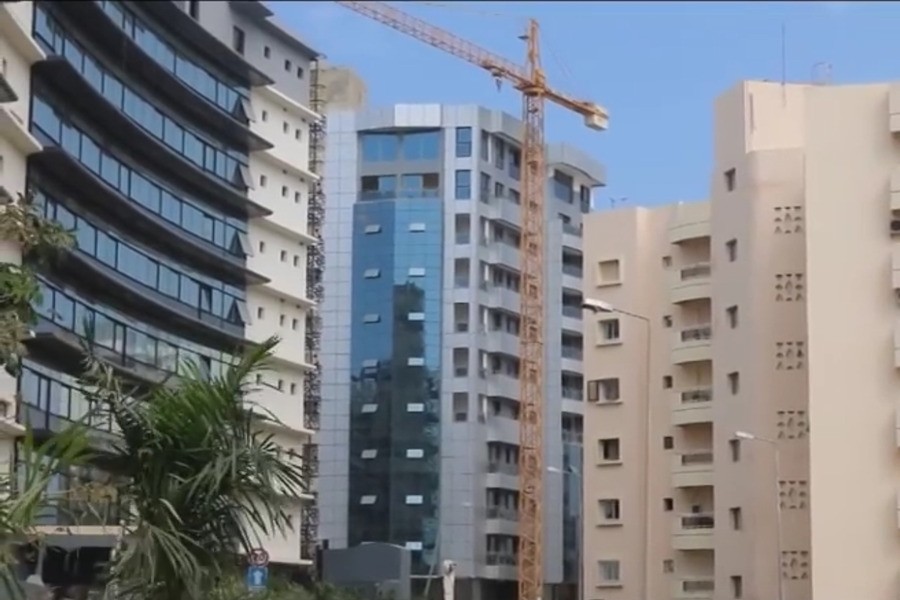
Residential excellence for families
Located in the heart of the Sacré-C?ur district, Cité Keur Gorgui has quickly established itself as a benchmark in upscale family living. This modern residential complex combines optimal security, comfort and prestige, making it a preferred choice for discerning families.
Cité Keur Gorgui stands out for the exceptional quality of its infrastructure. Families will find spacious, well-designed accommodation, ranging from luxurious apartments to sumptuous villas, all with top-of-the-range finishes. Communal areas are meticulously maintained, providing a clean and pleasant environment for residents of all ages.
Ouakam:

Between tradition and modernity
Ouakam, a former Lebou village in the throes of change, offers an interesting alternative for families looking for a developing neighborhood. The district is characterized by a fascinating blend of tradition and urban modernity.
In recent years, Ouakam has undergone significant development. The construction of new residences and modern housing complexes has transformed the urban landscape, offering a variety of housing options for families. Improved road infrastructure has also made the neighborhood more accessible.
One of Ouakam?s major advantages is its accessibility. Well served by public transport and close to the Voie de Dégagement Nord (VDN), the neighborhood offers relatively easy access to downtown and Dakar?s business districts. This location is particularly appreciated by families whose parents work in different parts of the city.
In terms of cost of living, Ouakam is positioned as a more affordable option than upscale neighborhoods such as Almadies or Fann. This affordability, combined with the neighborhood's ongoing development, makes it an attractive area for young families and first-time buyers.
Freedom 6:
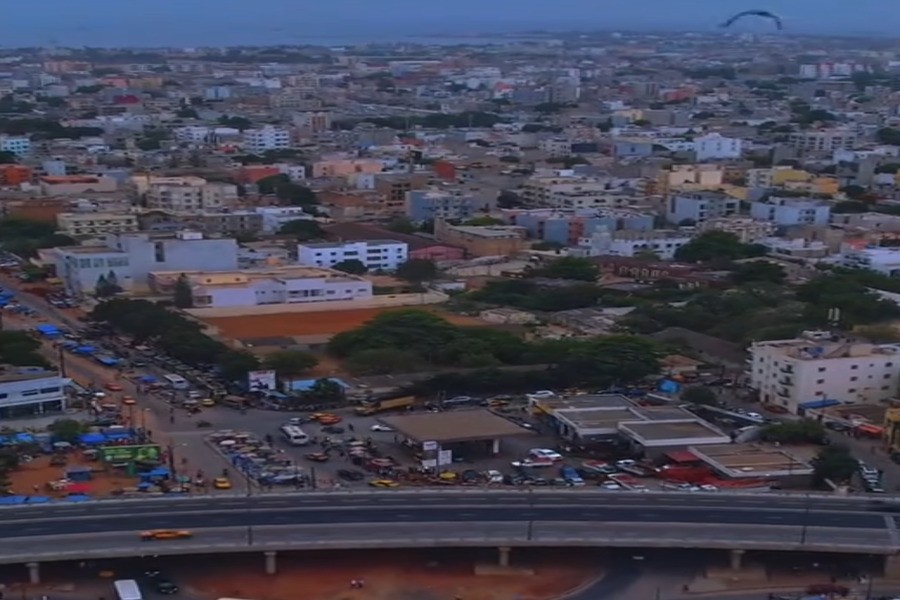
Conviviality at the heart of Dakar
Liberté 6, a neighborhood planned in the 1970s, stands out for its well-organized urban structure and strong social cohesion. The neighborhood attracts families looking for a friendly, community-oriented environment.
Neighborhood life is particularly vibrant at Liberté 6. The many local associations and regular community events create a strong sense of belonging among residents.
This warm, family atmosphere is one of the neighborhood?s main assets.
In terms of services and shops, Liberté 6 is well served. The neighborhood boasts a good network of convenience stores, lively local markets and essential services such as banks and pharmacies. This independence in terms of day-to-day services is much appreciated by families.
Security is another strong point of Liberté 6. The neighborhood is renowned for its tranquility, with a visible police presence and a well-organized community watch system. These elements contribute to creating a safe and reassuring environment for families.
Liberté 6's real estate profile is varied, offering options for different budgets. Both apartments and detached houses are available, allowing families to choose the type of housing that best suits their needs.
Dakar's dynamic, central districts
Dakar is home to a number of central neighborhoods that pulsate with the city?s economic and cultural activity. Among them, Plateau and Medina stand out for their uniqueness and importance to Dakar life.
Le Plateau :
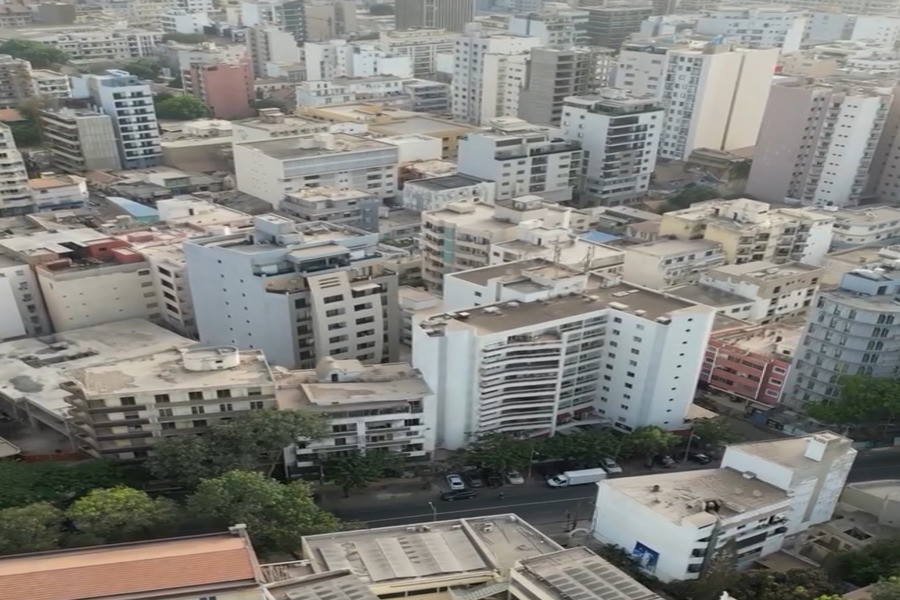
The beating heart of Dakar
The Plateau, Dakar?s nerve center, embodies the dynamism and modernity of the Senegalese capital. Home to the city?s business and administrative centers, it plays a crucial role in the country?s economic and political life.
The excitement of the Plateau can be felt around every corner. Modern skyscrapers rub shoulders with renovated colonial buildings, creating a fascinating urban landscape that bears witness to Dakar?s rich history. Wide tree-lined avenues and lively public squares add to the charm of this central district.
Business life in the Plateau is intense. Many national and international companies, banks and government institutions are headquartered here. This concentration of activity makes the Plateau the preferred workplace for many executives and civil servants.
But the Plateau doesn't go to sleep after office hours. The district is home to a lively nightlife, with numerous restaurants, bars and clubs attracting night owls. The cultural scene is equally vibrant, with art galleries, theaters and cinemas enriching the leisure offering.
In terms of housing, the Plateau offers mainly apartmentsThese range from functional studios to luxurious penthouses with sea views. These homes are particularly attractive to young professionals and childless couples, attracted by the proximity of the workplace and the accessibility of leisure activities.
Living in Le Plateau has many advantages, not least its central location and easy access to all amenities. However, this attractiveness also has its drawbacks: the cost of living is high, traffic can be dense during rush hours, and the constant noise of the city can be tiring for some residents.
The Medina:

A changing cultural melting pot
The Medina, one of Dakar?s oldest districts, offers a striking contrast to the neighboring Plateau. This popular district, rich in history and tradition, is today undergoing a fascinating evolution, making it one of the capital?s most dynamic areas.
The atmosphere of the Medina is unique, harmoniously blending tradition and modernity. Narrow streets lined with colorful houses stand alongside wider arteries where new buildings are being erected. This architectural diversity reflects the history of the district and its gradual transformation.
The beating heart of the Médina lies in its markets and local shops. The famous Tilène market, one of Dakar?s largest, attracts crowds of shoppers every day in search of fresh produce, colorful fabrics and local crafts. These traditional commercial spaces coexist with trendy new boutiques, creating a vibrant and diverse shopping atmosphere.
The evolution of the Medina in recent years has been remarkable. The district is attracting more and more artists, designers and young entrepreneurs, who are breathing new energy into the area. Art galleries, trendy cafés and coworking spaces are springing up, gradually transforming the face of the district while preserving its authenticity.
This transformation offers real estate opportunities interesting. The Medina?s old houses are being creatively renovated into modern lofts or mixed-use commercial and residential spaces.
These projects are attracting a new population, a mix of long-standing residents and newcomers in search of an authentic, dynamic living environment.
Living in the Médina means choosing to immerse yourself in Dakar culture. The district is renowned for its cultural events, street festivals and intense community life. This cultural richness, combined with its proximity to the city center, makes it an increasingly popular place to live.
Dakar's developing neighborhoods
While the center of Dakar continues to grow denser, new development hubs are emerging on the outskirts, offering promising prospects for residents and investors alike.
Yoff:

A coastal district in full transformation
Yoff, once known for its proximity to the former international airport, is today a neighborhood in the throes of change. Located on the north coast of Dakar, Yoff retains its fishing village charm while embracing modernity.
Although Léopold Sédar Senghor airport has been replaced by Blaise Diagne International Airport in Diass, Yoff has managed to capitalize on its strategic location. The district is still easily accessible, being linked to the city center by major roads.
Development projects in Yoff are numerous and ambitious. New residential complexes, modern shopping centers and leisure facilities are emerging. These developments attract a diverse population, from young families to professionals seeking a living environment that combines proximity to the sea with urban comfort.
Yoff offers considerable investment potential. Property prices, still relatively affordable compared with those in the town center, are on the rise. This dynamic offers interesting opportunities for visionary investors.
Despite these changes, Yoff retains an authentic local way of life. Lebous traditions are still very much alive, notably through the festivals and rituals that punctuate life in the neighborhood. This coexistence of modernity and tradition creates a unique atmosphere, appreciated by long-standing residents and newcomers alike.
Diamniadio:
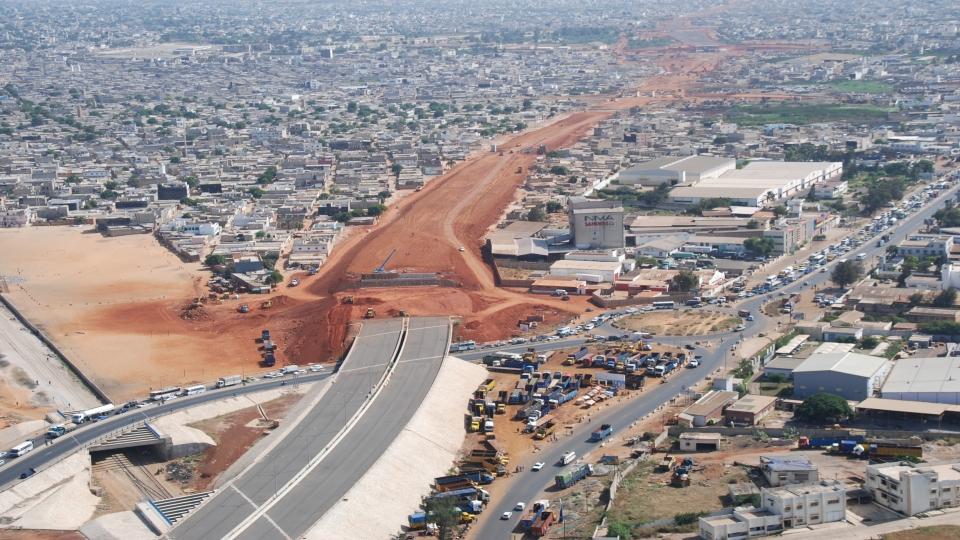
The city of the future on Dakar's doorstep
Diamniadio, located some 30 kilometers east of Dakar, represents one of Senegal?s most ambitious urban projects. This new city, currently under development, is designed to relieve congestion in the capital and create a new economic and residential hub.
The Diamniadio urban project is impressive in its scope. Planned as an intelligent, sustainable city, it aims to offer a modern, environmentally-friendly living environment. The urban plan calls for a mix of residential areas, green spaces, business parks and public infrastructures.
Diamniadio's planned infrastructure is equal to its ambitions. The city is already home to an international conference center, a modern railway station with links to Dakar, and several government institutions. University, hospital and sports complex projects are also underway.
For new residents, Diamniadio offers unique opportunities. The town offers new, modern housing, often at more affordable prices than in central Dakar.
The emphasis on quality of life, with abundant green spaces and leisure facilities, is attracting more and more families and young professionals.
Diamniadio?s future prospects are promising. The town is set to become a major economic hub, with the planned establishment of numerous businesses and industries.
This economic growth should be accompanied by an increase in property values, making Diamniadio an attractive option for long-term investors.
However, the development of Diamniadio is not without its challenges. One of the major challenges is to create a genuine community life in this new town. Authorities and developers are working to breathe soul into Diamniadio, by encouraging the development of local shops, cultural spaces and community events.
Whether in dynamic central districts such as Plateau and Medina, or in developing areas such as Yoff and Diamniadio, Dakar offers a diversity of urban environments to meet different needs and aspirations. These neighborhoods reflect the dynamism and constant evolution of the Senegalese capital, offering varied opportunities for residents and investors alike.
Dakar neighborhood comparison
Choosing the ideal neighborhood in Dakar can seem a daunting task, given the diversity of options available. To help you make up your mind, we've compiled a detailed comparison of the Senegalese capital's main neighborhoods.
Neighborhood overview
Rather than a simple table, here is a comparative analysis of Dakar?s neighborhoods, taking into account the essential criteria for your choice of residence:
Property prices : The Almadies and the Plateau are positioned in the upper range, with prices reaching up to 1.5 to 2 million FCFA per square metre for purchase. In contrast, neighborhoods like Ouakam or Yoff offer more affordable options, with prices ranging from 500,000 and 800,000 FCFA per square meter.
- Security Upscale residential neighborhoods like fann and Mermoz-Sacré-C?ur are generally afforded a high level of security, with frequent patrols and private surveillance systems. The Medina and certain areas of Yoff may require extra vigilance, although significant efforts have been made to improve safety.
- Amenities : Le Plateau excels in terms of convenience, with a high concentration of shops, restaurants and services. The Almadies and Ngor also offer a good level of amenities, particularly suited to an international clientele. Developing districts such as Diamniadio promise modern infrastructure, although not all are yet operational.
- Transport access : Le Plateau and the Medina benefit from excellent public transport links. Outlying districts such as Yoff or Ouakam may require the use of a private vehicle, although the transport network is constantly improving.
- Living environment: For a green and quiet setting, fann and Mermoz-Sacré-C?ur are privileged choices. Lovers of seaside life will appreciate Ngor and Almadies. Le Plateau offers a dynamic urban atmosphere, while the Medina offers an immersion in local culture.
Recommendations by profile
For families : Mermoz-Sacré-C?ur and Fann are particularly well-suited, offering quiet surroundings, green spaces and good schools. Ouakam may be a more affordable alternative for young families.
For expatriatesLes Almadies and Ngor remain the best bet, with their international ambience and convenient amenities. Le Plateau may suit expatriates who prefer a more urban setting.
For students: Proximity to the University
Cheikh Anta Diop makes Fann and Point E attractive. The Medina offers a more affordable option and a rich cultural experience.
For young professionals : Le Plateau is ideal for those who prefer proximity to work and a lively nightlife. Ouakam and Yoff offer a good compromise between accessibility and a more moderate cost of living.
Advice on choosing your Dakar neighborhood
Choosing the right neighborhood Dakar requires careful thought and a good knowledge of the terrain. Here are a few essential tips to guide you in your decision.
Key factors to consider
Proximity to the workplace : In Dakar, where traffic can be dense, the distance between your home and your workplace is crucial. Choose a neighborhood that will minimize your daily commuting time.
- School access : For families, the quality and proximity of schools are paramount. Find out about the educational options available in each neighborhood.
- Desired lifestyle : Think about your priorities. Do you prefer the urban bustle of Plateau, the seaside ambience of Almadies, or the residential calm of Mermoz-Sacré-C?ur?
- Budget : Clearly define your housing budget and compare it with average prices in different neighborhoods. Don't forget to take into account utilities and the local cost of living.
- Safety : Find out about the level of safety in the area, for example by talking to current residents or consulting local statistics if available.
The importance of on-site visits
There's no substitute for the experience of visiting us in person. We highly recommend :
- Visit the neighborhood at different times of day to get a clear idea of the atmosphere.
- Walk the streets, visit local shops and observe daily life.
- Use public transport to and from the neighborhood to assess accessibility.
- Talk to local residents to get first-hand information about life in the neighborhood.
Useful resources for your search
For more in-depth research, here are a few valuable resources:
- Websites oflocal estate agencies for the ads and market prices.
- Forums and Facebook groups for expatriates and residents of Dakar for genuine opinions.
- Official reports on Dakar's urban development, available from municipal authorities.
- See our detailed guide to each neighborhood for in-depth information.
There's nothing like real-life experience to give you an accurate idea of a neighborhood. Here are a few testimonials from residents who share their experiences and advice.
Living in Almadies : The experience of SophieFrench expatriate
Having lived in Almadies for three years now, I particularly appreciate the neighborhood?s international atmosphere. The nearby beaches are a real plus for weekends. However, the cost of living is high, and traffic can be a challenge at rush hour. My advice: if you work in the city center, plan to leave early in the morning to avoid the traffic jams?
Family life at Mermoz-Sacré-C?ur : The testimony ofAbdoufather of three
We chose Mermoz-Sacré-C?ur for its tranquility and the quality of its schools. The neighborhood is ideal for raising children, with its green spaces and safety. The only downside is the lack of nightlife, but that's a compromise we're happy to accept for the sake of our family.
The authenticity of the Medina : The experience of FatouSenegalese student
Living in the Medina means being at the heart of Dakar culture. I love the bustle of the markets and the friendliness of the locals. Admittedly, the area can be noisy and the accommodation sometimes dilapidated, but the cultural experience is incomparable. My advice to newcomers: get involved in the life of the neighborhood, it's the best way to integrate?
The constant evolution of Dakar
Dakar is a city in perpetual transformation. Major urban projects, such as the new city of Diamniadio and the renovation of certain historic districts, bear witness to this dynamic development. This constant evolution offers new opportunities for residents and investors alike, but it also implies challenges in terms of infrastructure and urban integration.
The expansion of the city towards its outskirts, improved transport networks and the emergence of new economic hubs are gradually redrawing the map of Dakar.
This transformation influences real estate trends and can change the appeal of certain neighborhoods over time.
No guidebook, however comprehensive, can replace the personal experience of discovering Dakar. We strongly encourage you to explore the city's different neighborhoods for yourself. Every street, every square, every market tells a story and contributes to Dakar?s rich urban tapestry.
Lose yourself in the narrow streets of the Medina, stroll along the Corniche des Almadies, or mingle with the hustle and bustle of the Plateau. Soak up the unique atmosphere of each neighborhood to find the one that suits you best.
Dakar is a city to be experienced as much as it is to be visited. Whether you're a future resident, a potential investor or simply a lover of African cities, Dakar has some great discoveries and unforgettable experiences in store for you.
Additional resources
To help you in your exploration of Dakar and your search for the ideal neighbourhood, here is a selection of useful resources:
Real estate listings by neighborhood
Discover the real estate offers in the different districts of Dakar:
- Property advertisements in Almadies
Tray
14 Propriétés
Sacré-C?ur
25 Propriétés
Point
82 Propriétés
Explore Dakar
Discover the hidden treasures and iconic monuments of Dakar, Senegal's vibrant capital. From the poignant Maison des Esclaves to the imposing Monument de la Renaissance Africaine and the symbolic Place du Souvenir Africain, each site tells a part of the city's rich and complex history. These must-see sites offer a fascinating insight into the culture, history and spirit of Dakar. Prepare yourself for a captivating journey through time and space in this unique West African metropolis.
